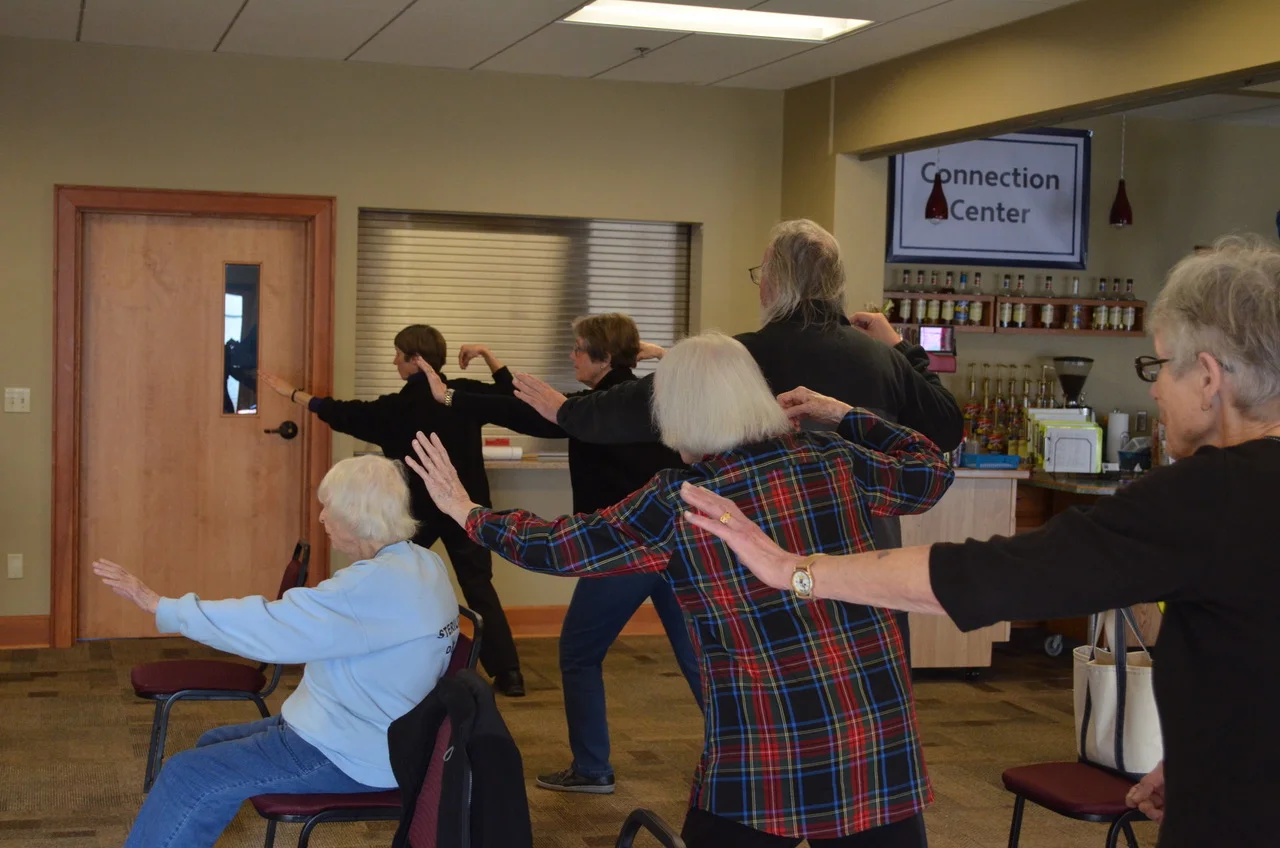Our county demographic is a poster child for a “TJQMBB belongs here” campaign. Clallam County, the furthest west reach of Washington State, is a nationally advertised retirement destination as well as the home of an aging population of the folks who grew up here in the former dairy and forestry economies. My friend and co instructor, Peggy, is a physical therapist. I cared for people in their homes. We were both frustrated by the high percentages of clients that came into our care after a life changing fall. Not their first fall, mind you. After the life changing one. We both took the TJQMBB training under Jan Voit and put our energies together to start our first class in September 2015. We have been teaching TJQMBB ever since and now operate under a federal grant through the Olympic Area Agency on Aging. We now have 60 students in the classes funded by the grant and plan to add 3 more classes in April. What were the challenges and how were they handled?
Where to hold the class? We checked dance studios, fitness centers, churches, granges, senior centers, city rental spaces, fire halls. We had an offer from a retirement center to use their activity room for both their residents and local community members. It fit both their care model for their residents and their business model for community exposure. Our goal is to get more people moving and offering that opportunity in a different time frame and setting to encourage involvement.
What to charge? We looked at local senior exercise class pricing and matched it. I called a couple public facilities to price room rental. We had people sign up for the class at $125/12 weeks. We provided the second 12 weeks of the program, at an additional $125, with 90% follow through from the participants. I gave prorated refund up to half way through the program if it didn’t work out for people.
How to advertise your class? Word of mouth is important. One small article in the business section of a local weekly newspaper resulted in 75 phone calls within 3 hours of the paper hitting the mailboxes. Delivery of a flyer to a local primary care office and private physical therapy center resulted in referrals. We also had success with contacting a retirement community who is hosting the class and sending their own staff to the training.
How hard is it to teach? The written curriculum gives you the step by step directions. You do have to spend time studying the on-line teaching material in preparation for classes, so the visual aide needed to accompany the written curriculum provides good support. The more classes you teach, the easier it flows.
Do students stick with it? At our initial contact with prospective students, we emphasize the importance of making a time commitment for the program. We emphasize that research results are based on a 24-week program and that the learning happens because of the repetition and steady progression built into the curriculum. Most people have stuck with the program not only through 12 weeks, but through 24 weeks. The summer season and this past winter’s flu season have been our biggest absentee causers. There is a class comradery that can be fostered to help with the student commitment.
What did we learn as we taught TJQMBB classes? We have had luck with both morning and afternoon class times. Since we started the grant, we have had waiting lists for every class cycle we start. We are leaning towards letting all interested seniors attend the first class session. Follow that by a second session of doing balance assessments for everyone who wants to continue. We purchased a PA system after the first year and have input from the students that it is very helpful. It also helps to have flat bottomed sturdy chairs. We modified the sample liability form from the website, and we each carry professional liability insurance. It helps to have 2 or 3 people to run a session that involves the balance assessments.
The grant process:
I applied for a grant through our local Olympic Area Agency on Aging - a state office who handles federal administration on aging funds. With absolutely no experience in applying for grants, and less than marginal technical ability with computer programs, I fumbled through the application and 3 months later found out that we received about $23,000 to use over 18-month period. The grant requires that the program is offered without cost for participants over 60 years old.
To implement the grant, we needed a satisfaction survey for the participants, the TJQMBB fidelity checklist for instructors to communicate, instructor liability insurance that met the state requirements, and then a way to handle the many phone calls we had from prospective students.
I use the state and ORI websites as a source of information for myself, for potential students to learn about the program and now for government agency representatives who may be able to find grant sources. The agency’s state employees have been available and helpful. I gave a presentation on the TJQMBB program to them locally and was invited to an upcoming regional meeting to spread the word on the instructional content of the program, how to get people trained as trainers as well as the resources to find out who existing trainers are in their area.



